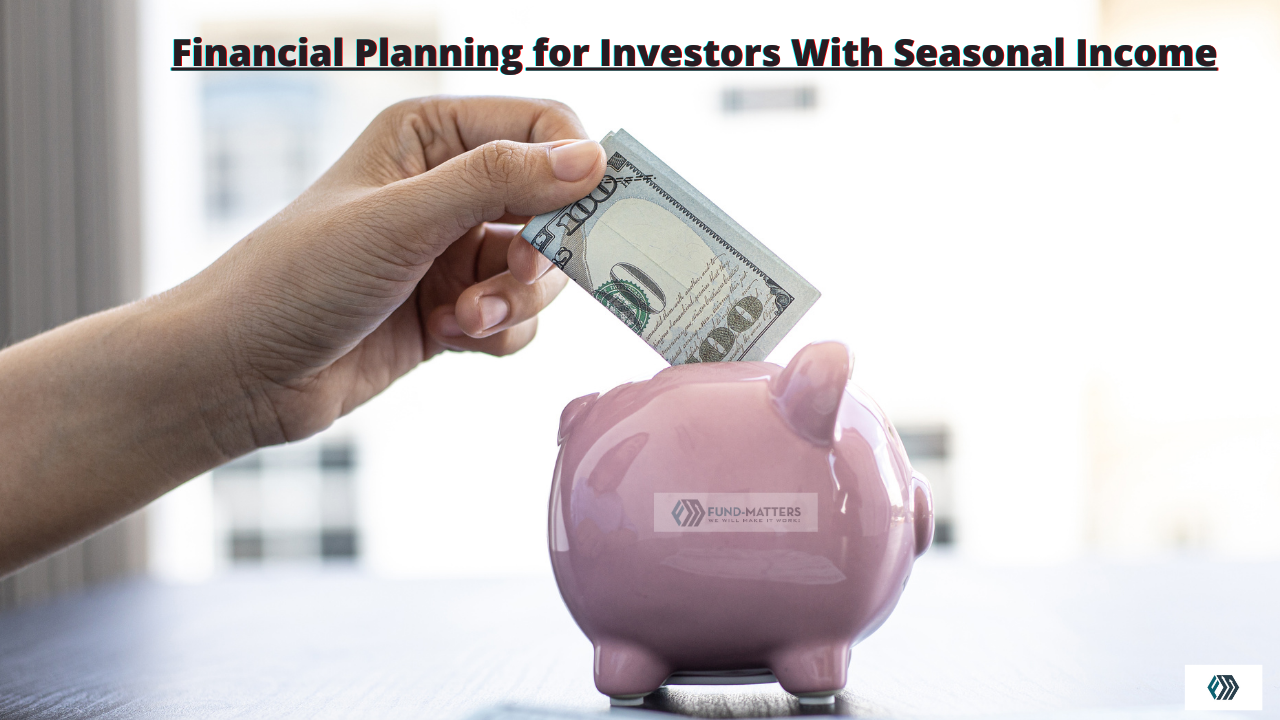Financial Planning for Investors With Seasonal Income

India has the world’s second largest freelance workforce or self-employed people after the United States, according to a ‘Truelancer freelancer India’ survey report of 2018. So, here are some steps that you need to take for your financial well-being, if you are a self-employed person with seasonal income or irregular income.
Build a contingency fund:
For self-employed people and freelancers, income is irregular. A contingency fund is the money set aside to cover unexpected situations or losses in business. The purpose of the fund is to improve your financial security by creating a safety net of funds that can be used to meet emergency expenses. You should have sufficient money in your contingency fund to cover six months of living expenses. In case the monthly income is highly volatile, then increase it equal to annual expenses.
Buy term and health insurance covers:
Self-employed people must buy a health cover because they won’t have any insurance from their employers. The amount of health cover for the family should be equal to one year of annual income. Apart from health insurance, self-employed people should also buy a critical illness insurance plan. For a term plan, taking a cover for ten times the annual income of self-employment is recommended.
Use the systematic investment plan:
As income is erratic for the self-employed people, experts recommend opting for a quarterly systematic investment plan (SIP) in mutual funds, if they are unable to commit to monthly SIP like salaried investors.
Alternatively, they can deploy a lump-sum amount in a liquid mutual fund scheme and from there the amount can be switched out periodically to your chosen equity funds by initiating a systematic transfer plan. With this investment strategy, the objective of investing a lump-sum amount and market averaging, both are achieved.
They should invest in diversified mutual funds and equity linked savings schemes for tax planning. Avoid investing in credit risk, thematic and sector funds.
Separate business and personal accounts:
Most self-employed people only have a savings account in a bank and do not hold a current account to look after the business expenses. So, whatever income is earned, it is consumed either for personal expenses or business expenses. There needs to be a proper bifurcation of the income you earn. Track your household expenses and know how much is actually getting reinvested into the business. Such a practice will help you to stay organized with your financials.
Invest for your retirement:
Being self-employed person, you don’t have the employee provident fund (EPF) to build your retirement corpus as a salaried person would have. Also, you are not eligible for gratuity benefits on retirement. So, it’s important to invest for your retirement corpus yourself.
Investing in the Public Provident Fund (PPF) and the National Pension System (NPS), as they have longer lock-in periods, is advisable. In PPF, there is a lock-in period of 15 years and in the NPS the investment remains locked-in till the age of 60. From the NPS, at 60, you can withdraw only 60 per cent of the contribution, and the balance 40 per cent needs to be invested in an annuity plan.
However, if have enough time to retire and a relatively higher risk appetite, then equity mutual funds are another good option. The fund manager diversifies investments across market caps and sectors in a bid to maximize gains for investors. By investing in ELSS (equity linked savings schemes), you can claim tax benefit up to Rs 1.5 lakh u/s 80C of the Indian Income Tax Act.



